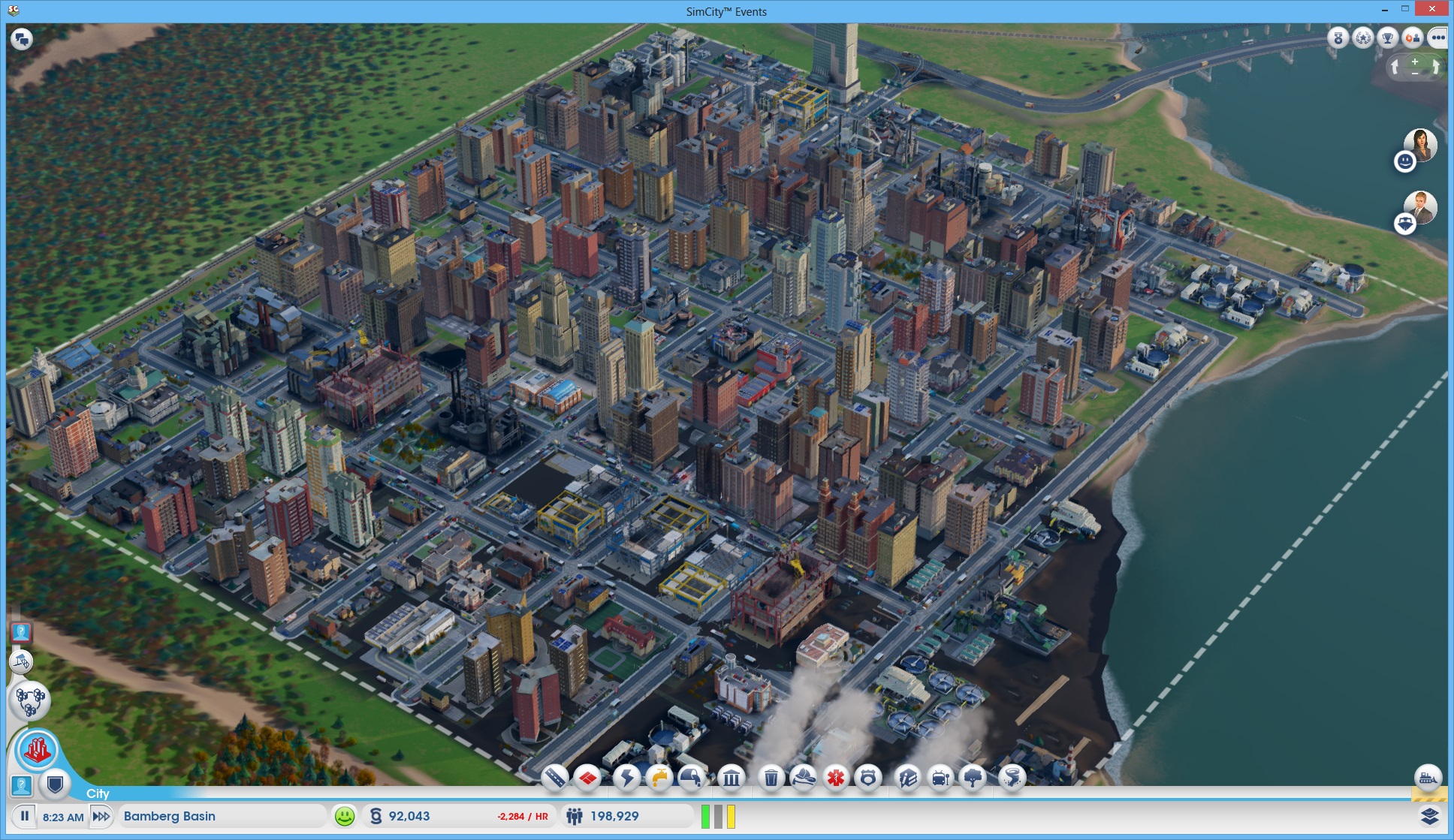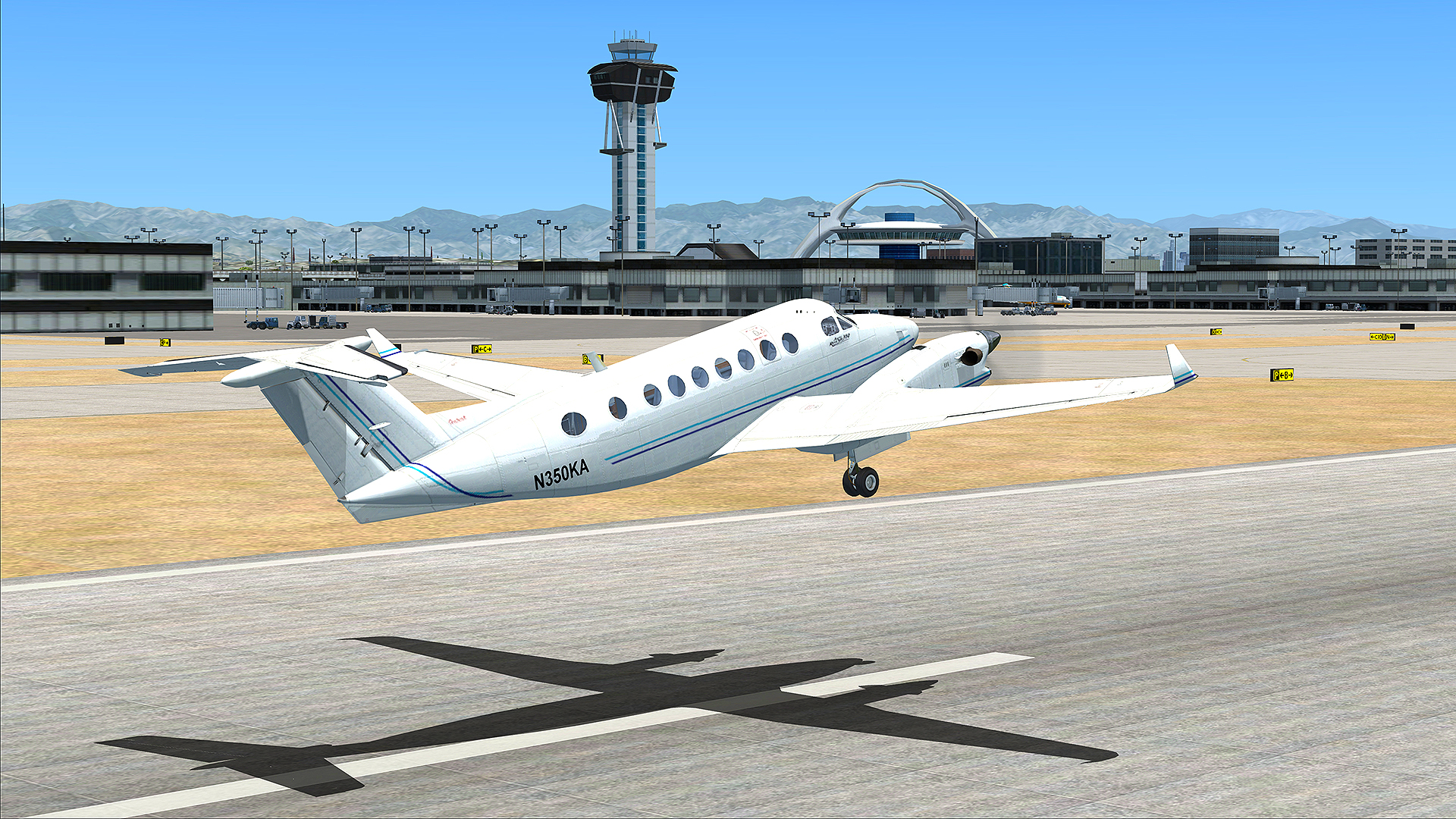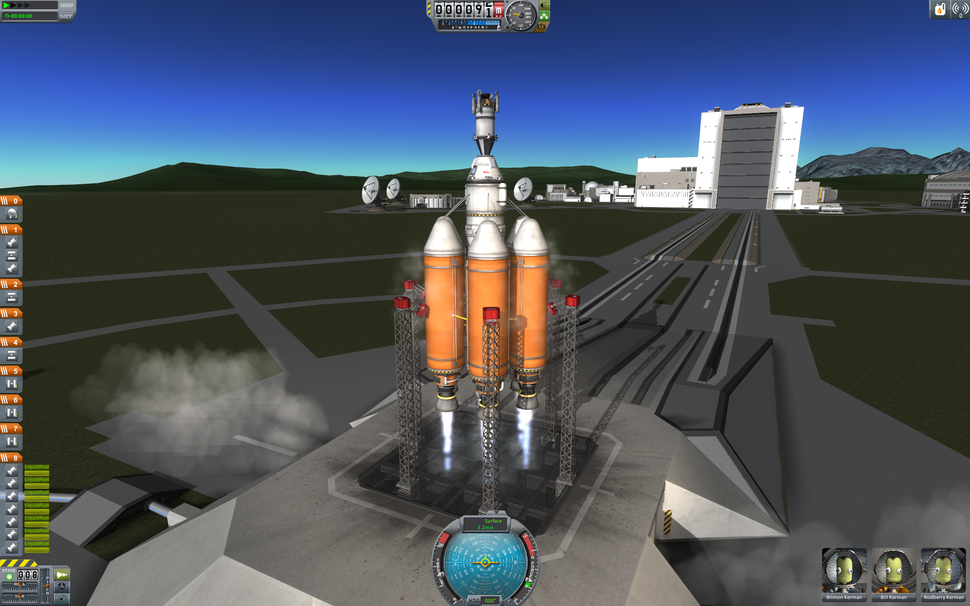Ever since the first simulators were released in the 1980s, the world of simulation games has been a formidable force in the gaming world, with dozens of games being produced every year involving a wide range of aspects of real life – from city-building games to flight simulators, public transit management games, and sports management simulators. While they’re not as popular as first-person shooter games, RPGs, or strategy games, they still garner a sizable fanbase that continue to embrace the genre and enjoy the variety of titles that are available.
However, as with making all other games, there are several factors that must be taken into account when attempting to create a high-quality simulator that will not only enjoy commercial success, but also earn a great deal of praise from critics. If we rephrase this thought in the form of a question, we would be asking: “Just what makes a good simulation game?”
Making a critically and commercially successful game requires a balance of various factors, including the obvious playability and entertainment value. However, simulation games are special in that they must also attempt to reflect an aspect of real life to a great extent. A good simulator must therefore manage to synthesize all these factors into one final high-quality product.
Indeed, every studio sets out to achieve this goal, but not many succeed – and too many simulations, the brainchildren of enthusiastic teams of developers, ultimately become the subject of moderate to negative reviews, along with poor (if not downright abysmal) sales upon release.
But why might that be true? And why are some simulation games (like SimCity 2000, Kerbal Space Program, or Microsoft Flight Simulator X) still topping “Best of All Time” lists, years after their release?
Let’s look at each of those factors that I just mentioned in turn.
It’s in the name: The Simulation Aspect
According to the Merriam-Webster Dictionary, a simulation is an “imitative representation of the functioning of one system or process by means of the functioning of another.” In a gaming perspective, a simulator game would therefore aim to display the ins and outs of a certain real-life process all within the medium of the video game.
Of course, this is no easy task. Most systems and processes in real life are highly complex and involve an amalgamation of various factors. For example, simulating the city-building process doesn’t only involve building roads and developing residential, commercial, and industrial zones. There’s also a variety of services that must be installed and maintained, along with keeping the citizens happy – all the while making sure that these services are adequately priced to avoid players from going bankrupt too early in the game. Moreover, developers of city-builders (especially modern titles) must also consider how faithful the graphics would be to real life, as well as the simulation of urban traffic – both vehicular and foot traffic.
Indeed, simulating city management does require much effort into considering all these factors and making sure that they are all included in the game for the most realistic portrayal possible. For example, you want to make sure that your city can feature realistic sprawl – SimCity 2013 limited cities to a maximum of 2 km by 2km in area, and that wasn’t welcomed at all by the fanbase.
Previous SimCity games allowed players to build sprawling metropolises (even if they were made up of several smaller plots). Therefore, the difference between this (from SimCity 4):

and this (from SimCity 2013):

is pretty drastic. And it’s not realistic at all.
Alternatively, let’s consider the subgenre of flight simulators. These programs have been revolutionary in the realm of pilot training and have allowed pilots to test their flying skills in a variety of situations, including changes in weather, location, time of day, and mechanical conditions. It’s no wonder that creators of flight simulators must model all these factors as closely to reality as possible.
Microsoft Flight Simulator X is an example of a flight simulator in which realism is focused on well. For example, the development team has made sure that the flying environment is as accurate as possible, from generating terrain features specific to the location over which the player is flying to positioning the stars depending on the location and time of year. Moreover, the player can modify weather conditions – including cloud types, turbulence, density, precipitation type, and wind conditions – to increase the range of real-life conditions that can be simulated. Besides, players can choose to take off or land at 24,000 real-life airports the world over, including most major airports. As such, players can truly see themselves flying from New York to Paris, or from Moscow to Beijing, without needing to get on an actual plane.

As a pilot, the player has the ability to develop flight plans, undergo preflight checks, and follow the instructions of air traffic controllers while flying to their destination. All the equipment in the plane can be controlled by the player, who also has the option of simulating random equipment failures in order to test their ability to react quickly.

With such an extensive level of simulation, it’s no wonder that Microsoft Flight Simulator X – and the Microsoft Flight Simulator series in general – have attracted much attention from aviation fanatics and people who want to learn about the processes behind flying. Therefore, I see this as a simulation game done well in the realm of realism – in which all the components of a certain process are taken into account and simulated, even down to the smallest controls and player choices.
In providing a virtual view of processes, simulation games should also involve much modelling of dynamic systems. The developers of the SimCity games were able to model these systems using mathematical techniques like linear and differential equations, as well as cellular automata, in which how objects behaved were dependent on how they themselves interacted with their neighbours rather than overall equations that encompass the behaviour of all objects in general. Moreover, city-building and transit management games would often require the implementation of pathfinding AI, which is heavily dependent on an algorithm to calculate the shortest path between two points.
To develop a flight simulator, developers would have to consider mathematical and scientific models, such as planet curvature and Rayleigh scattering, with the latter being used to calculate the colour of the sky during different times of day.
In loading up simulation games, players expect a platform where they can be involved in real-life situations and learn more about the processes behind them. It’s a good way to let players further explore their passions as well as escape the humdrum of daily life. As such, it’s important that the games these players demand simulate as much of the processes involved as possible. This requires an immense understanding of these processes, and an overarching commitment to realism in most aspects of the game. Indeed, it means that many models, calculations, and algorithms must be realized to accurately portray not only these processes, but also the environment that serves as a backdrop for the simulation.
The fight against boredom: Maintaining Playability and Enjoyment
However, an emphasis on simulating reality isn’t the only thing that developers must consider when developing a simulation game. Developers should also focus on the second part of the name: the “game” aspect. As the word implies, simulation games are also meant to provide an enjoyable experience for the player, which can be done in a variety of different ways.
For example, simulation games can allow the player to have maximum control over what they see on their screen. While games such as SimEarth may be attractive to some (I mean, who doesn’t want to create a planet of their own and watch it grow and develop over time?), it suffers from the issue of forcing idleness onto the player after they’re done modifying the continents and atmospheric conditions of their planet. After the player has set up their planet and plopped several living species, there’s really nothing to do but watch the planet grow for the next several billion years until the Sun becomes a red giant and wipes out all life.

On the other hand, with standard city-builder and tycoon games, players are given the ability to constantly manage some part of the canvas, from building new roads, paths, and landmarks to dealing with taxes, ticket prices, and expenses. Let’s take OpenTTD, a tycoon game in which the player manages a transportation company, as an example.
In OpenTTD, the player must develop and manage an expansive transportation network over a landmass dotted with human settlements and industrial sites and facilitate the movement of people and goods between these areas. Not only must the player ensure that the network makes as much money and delivers as much cargo as possible, they must also be able to confront a variety of unexpected situations, like closures of industrial sites and vehicle breakdowns due to old age. Furthermore, depending on their needs, players have the option of purchasing buses, trucks, trains, planes, and ships – or a combination of these modes of transport – to carry people and goods across the map.

Therefore, compared with SimEarth, OpenTTD allows players to be constantly active and engage in micromanagement in the various aspects of their transportation network. Although specific events do occur by chance, players are allowed – and encouraged – to determine an effective reaction to these events that would help them maintain an ever-increasing cash flow and an infrastructure that is continually expanding. Being able to keep “moving” and making decisions every minute makes a game much more enjoyable for the average player than forcing them to idly watch as the system they are overseeing somewhat slowly evolves over time.
Another thing that can be done to make the game more enjoyable is to incorporate into the narrative of the game goals and challenges that gradually increase in difficulty over time. Marc Prensky gives an example of a flight simulator containing a variety of small goals, such as “learning to take off,” “landing successfully 10 times,” or “land safely even though your two starboard engines just flamed out.” These can be gradually implemented as the game progresses, providing the perfect opportunity for players to use their growing bank of newly learned skills to good use. Moreover, by making each goal a minigame itself, the game can allow players to often develop feelings of achievement throughout the gaming experience, therefore inspiring them to keep going and reach the overall goal.
In Kerbal Space Program, for example, the player can complete a variety of contracts that gradually increase in difficulty. The first few contracts involve launching the player’s first vessel to certain altitudes, and then gathering scientific data and orbiting Kerbin (the game’s version of Earth). After the player has had some more experience with the game, they can fulfill contracts that entail building a space station, orbiting the Mun (aka the Moon), and finally exploring other planets in the game’s Solar System.

Another example can be seen in Euro Truck Simulator 2, whereby the player drives trucks across Europe. As the game progresses and the player gains driving experience, the jobs available to them generally increase in both distance and pay, the latter of which can serve as incentive for players to keep playing and accumulate even more income for their in-game character.

However, in developing a simulation game that is both realistic and engaging, there has to be a sort of balance. Sometimes, making a game overly realistic can detract from the fun that the player experiences; yet making a game too fun and not faithful enough to the process being simulated wouldn’t make it much of a simulation game at all. Therefore, developers must find a sweet spot that combines an appropriately accurate depiction of real-life processes with a great degree of fun.
Take Kerbal Space Program again as an example. In this game, the astronauts and support crew are all Kerbals – short, thin, green-skinned characters that serve as comic relief in the midst of the serious process of rocket creation. They’re known for being incredibly courageous and willing to be the first to make giant leaps for Kerbalkind – but they’re also equally clumsy and incompetent at times. Your average Kerbal probably won’t get hired at NASA – not in a million years; and real-life rocket scientists and astronauts don’t behave like this anyway. Yet Kerbals do provide at least a few smiles and laughs throughout the gaming process, even as players are spending hours figuring out the perfect design for a rocket heading straight for the Sun.

Of course, the game is still informed to a great extent by real-life physics; design a rocket with engines that aren’t very powerful, and it won’t have enough thrust to reach its destination. Rockets with more fuel tanks than it can realistically support will tip over and explode, leaving the player with hopefully a better understanding of rocket science. The game’s balance of realistic physics, player engagement, and entertainment has made it so popular, to the point that NASA, the European Space Agency, and Elon Musk have become fascinated with it. And it’s that exact balance that makes Kerbal Space Program a good simulation game in my book.
Ultimately, simulation game developers need to remember that what they’re creating isn’t simply a simulation for educational purposes, but a game for both casual and experienced players alike to enjoy. Therefore, there has to be a balance between absolute realism and commitment to the processes being simulated and making sure that the game can be fun enough to keep players engaged and interested (and possibly laughing their heads off) for hours on end.
Conclusion
Overall, a good simulation game should manage a balance between a high degree of realism and player engagement. Its mechanics should be as faithful as possible to the processes that it attempts to model. However, it should also incorporate the player into the game and allow them to constantly make decisions that can be reflected in the simulation canvas. And, as a game, it should be able to continually engage the player through methods such as small goals and tasks or little quirks to induce a smile or laugh in the player – just so they’ll have the urge to come back to the game more often.
References
Contract. (2020, March 7). Kerbal Space Program Wiki. https://wiki.kerbalspaceprogram.com/wiki/Contract
JoeStrout, tiggus, & wccrawford. (2014, October 22). What makes a good simulation game? [Online discussion group]. Unity Forum. https://forum.unity.com/threads/what-makes-a-good-simulation-game.275487/
Kerbal Space Program. (2020). In Wikipedia. https://en.wikipedia.org/w/index.php?title=Kerbal_Space_Program&oldid=945125020
Lackey, J. (2006, October 6). Microsoft Flight Simulator X Review. GameSpot. https://www.gamespot.com/reviews/microsoft-flight-simulator-x-review/1900-6159886/
Macy, S. (2015, May 14). Kerbal Space Program Review. IGN. https://ca.ign.com/articles/2015/05/15/kerbal-space-program-review
Merriam-Webster. (n.d.). Simulation. In Merriam-Webster.com dictionary. Retrieved March 10, 2020, from https://www.merriam-webster.com/dictionary/simulation
Pathfinding. (2020). In Wikipedia. https://en.wikipedia.org/w/index.php?title=Pathfinding&oldid=945235997
Prensky, M. (2001). “Simulations”: Are They Games? In Digital Game-Based Learning. McGraw-Hill. http://www.marcprensky.com/writing/Prensky%20-%20Simulations-Are%20They%20Games.pdf
Savage, P. (2015, May 1). Kerbal Space Program review. PC Gamer. https://www.pcgamer.com/kerbal-space-program-review/
SimEarth. (2019). In Wikipedia. https://en.wikipedia.org/w/index.php?title=SimEarth&oldid=927979385
Thomas, D. (2018, March 1). Why do flight simulator developers use a custom game engine instead of adapting an engine such as Unreal Engine 4? [Online discussion group]. Quora. https://www.quora.com/Why-do-flight-simulator-developers-use-a-custom-game-engine-instead-of-adapting-an-engine-such-as-Unreal-Engine-4


